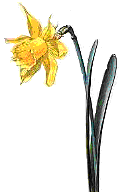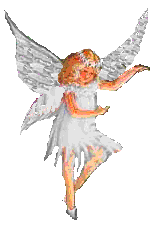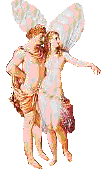|
|

Wrdding Day | The Ceremony | Breaking
the Glass
Before the Ceremony | After
the Ceremony | The Seven Blessings
The Jewish faith consists of three
main strands the Reform, Orthodox and Liberal, the Orthodox adhere strictly
to tradition, Orthodox Rabbi's will not marry inter denominational couples,
it is required that the non Jewish person convert to Judaism. A Jewish
wedding ceremony combines the legal and religious requirements of marriage.
In a Jewish Orthodox wedding as long as the bride
(Kallah) and the groom (Chatan) are standing under the Chuppah (A Canopy)
the ceremony can take place almost anywhere in a Synagogue, in either
of the couples homes or in a hotel.
The requirements for a Orthodox wedding are very
strict, your parents must have been married in the faith. The couples
have to have a Ketubah (Jewish marriage licence.) The celebrant has to
be an authorised Rabbi, and there must be at least ten males present at
the ceremony. This group is known as the Minyan.
|
|
|
The format of the ceremony must be strictly adhered
to, there is singing and readings from the Psalms, it can last for anything
up to an hour.
Orthodox
Jjewe forbid marriage to take place in the period between the feasts of
the Passover and Pentecost and on the Sabbath or feast days. Marriages
usually take place in the afternoon or evening although this is not a
requirement Sunday's and Tuesday's are considered especially auspicious.

|
|
|
- A few months
before you intend to get married, you must register with a synagogue
and Rabbi at the Chief Rabbi’s office, based in Finchley, London. For
more details, contact the Jewish Marriage Council on 020 8203 6311.
- Two weeks
before the Orthodox wedding, the groom must obtain a Ketubah from the
Chief Rabbi’s office. Written in English and Aramaic, this is the Jewish
marriage certificate. By Jewish rule, the groom must accept certain
responsibilities for the maintenance of his bride and these responsibilities
are spelt out in detail in the Ketubah. His principal obligations are
to provide food, clothing and shelter for his wife and be attentive
to her needs. The document also stipulates the minimum settlement to
be received by his wife in the event of the marriage being dissolved.
|
|
|
- The couple
are required to meet the Rabbi a number of times before they marry,
so he can offer advice about the meaning of marriage, provide them with
religious texts to read and answer any questions. There is also a meeting
between the bride and the Rabbi’s wife who will explain what is expected
of each partner in a marriage.
- The congregation
follow the service from the siddur (book) and service sheets are normally
provided when non-Orthodox guests are invited. The sheets explain the
significance of the ceremony and give a running order to guide the guests.
- This is not
normal practice, but is up to each individual Rabbi/synagogue.

|
| |
- All non-Orthodox
Jewish guests are welcome to the synagogue, as long as they respect
the traditions and customs of the Jewish faith and culture. Men must
cover their heads with a Kippah (which is often provided) and married
women should cover their heads too. All women are required to cover
their shoulders and arms before entering the synagogue.
- Male guests
normally wear a dinner jacket or suit and women, a dress or skirt –
trousers for women are considered disrespectful in the synagogue.
- The bride
usually wears a white wedding dress. Throughout the ceremony, her face
is covered by a veil. The groom wears a suit and a Kippah (skull cap)
more commonly called a Yarmulke, although most grooms opt for a top
hat instead. He will also wear a white prayer shawl, known as a Tallith/Tallit,
over his suit.

|
| |
- On the eve
of the wedding, the Chuppah or canopy is constructed from four vertical
poles, linked by a frame and traditionally covered by velvet embroidered
cloth. It represents the new home being established. As it is open on
all four sides, it symbolises the unconditional hospitality to be extended
to all who enter.
- Unless you’re
getting married on Rosh Chodesh (the New Moon and beginning of the Jewish
month), you'll have to fast for 24 hours before the ceremony. This period
is seen as a personal Yom Kippur – a day of atonement – when the couple
repent of their sins so that they can begin their new life together
with a ‘clean slate’.
- It is traditional
for the bride and groom not to see each other a week before the wedding.
|
| |
- The men,
including the ushers, arrive first. This is known as the groom’s Tish
– the time when the groom, ushers and male family members gather for
song and prayers before the ceremony.
- The fathers
of the bride and groom and the ushers enter with the groom. The bride
arrives with her mother, mother-in-law and the bridesmaids.
- The next
step is the Bedeken (the veiling of the bride), which is carried out
immediately before the processional of the bride, groom and their ‘unterfuhrers’
or attendants to the Chuppah. This takes place in another room, while
most of the guests are being seated. It can be a very private time with
just the rabbi, bride and groom and both sets of parents present. However,
some couples like to include their close family too - aunts, uncles
and siblings. The fathers bless the bride and groom and the groom veils
his bride. This is an ancient custom and serves as the first of many
actions by which the groom signals his commitment to clothe and protect
his wife. The custom developed from the Biblical story of Jacob, who
married Leah by mistake instead of Rachel, the women he loved.

|
| |
The
Ceremony.
The ceremony
itself lasts 20-30 minutes and is made up of the Kiddushin and the Nisuin.
The former involves the bride walking around the groom seven times on
her arrival under the Chuppah, to show this is the man she wishes to marry.
This action also represents the role she will play in creating an all-embracing,
religious warmth within their new home. She settles on her groom’s right-hand
side with her unterfuhrers to her right, the groom’s to his left. Two
pre-nuptial blessings are recited over wine, a symbol of sanctification
and joy, and the couple drink.
- The groom
now takes the wedding ring in his hand and declares to his wife: "Behold,
you are sanctified to me with this ring, according to the law of Moses
and of Israel". He places the ring on his bride’s finger. Bride
and groom are now legally married, but according to Jewish law, not
yet permitted to live together as man and wife.
|
|
|
- The Rabbi
then reads the Ketuba certificate of marriage to the couple and guests
in English and Hebrew, says more prayers and blesses the couple. Following
this, he performs a short speech in which he talks about the bride and
groom’s family histories.
- The Nisuin
that follows completes the ceremony. It is conducted under the Chuppah
and symbolises the act of the husband bringing his new wife into his
home. The bride and groom recite the seven marriage blessings (sheva
brakhos). They talk of the themes of the greatness of God as creator
of all, the happiness of bride and groom and the wellbeing of the eternally
inspiring source of religious strength, the city of Jerusalem. These
blessings are recited over a second cup of wine and at their conclusion,
bride and groom again drink some of the wine.
- During the
service, the Eshet Chail is sung. This is a special song to the bride,
which celebrates her new role as a wife.
- There
is usually a Jewish choir and musicians in attendance. They will perform
music from prayers and psalms, as well as traditional Jewish folk music.

|
|
|
- To mark the
end of the ceremony, the groom breaks a glass with his heel. This act
expresses sadness at the destruction of the Temple in Jerusalem. A Jew,
even during this personal and religious rejoicing is always encouraged
to "set Jerusalem above my chiefest joy". The breaking of
the glass also serves as a reminder to all concerned that the forthcoming
celebration and merry-making must be in accordance with what is considered
appropriate and respectable behaviour.

|
| |
|
|
|
|
|
- The bride
and groom sign the marriage documents with two witnesses - normally
a sibling, bridesmaid, best man or usher. The couple then spend a few
minutes alone together in a private room in the venue. This is known
as the Yichud and must be undisturbed time. They normally break their
fast at this point. The Rabbi will guard the door and the guests do
not leave the ceremony venue until they reappear. Once the time is over,
the guests wave the couple off, so they are the first to make their
way directly to the reception.
- The reception
party follows - usually a large, lavish dinner. The meal concludes with
grace and a repetition of the seven marriage blessings.
- Speeches
are made by the Rabbi, the father of the groom and the bridegroom. Afterwards,
guests dance to the accompaniment of Jewish folk music and or any other
music of their choice.

For more
information, go
to www.somethingjewish.co.uk
or click here
to learn about music in Jewish wedding ceremonies
|
|
|
We acknowledge the Unity of all within the sovereignty
of God, expressing our appreciation for this wine, symbol and aid of our
rejoicing.
We acknowledge the Unity of all within the sovereignty
of God, realizing that each separate moment and every distinct object
points to and shares in this oneness.
We acknowledge the Unity of all within the sovereignty
of God, recognizing and appreciating the blessing of being human.
We acknowledge the Unity of all within the sovereignty
of God, realizing the special gift of awareness that permits us to perceive
this unity and the wonder we experience as a man and a woman joined to
live together.
May rejoicing resound throughout the world as the
homeless are given homes, persecution and oppression cease, and all people
learn to live in peace with each other and in harmony with their environment.
From the Divine, source of all energy, we call
forth an abundance of love to envelop this couple. May they be for each
other lovers and friends, and may their love partake of the same innocence,
purity, and sense of discovery that we imagine the first couple to have
experienced.
We acknowledge the Unity of all within the sovereignty
of God, and we highlight today joy and gladness, bridegroom and bride,
delight and cheer, love and harmony, peace and companionship. May we all
witness the day when the dominant sounds through the world will be these
sounds of happiness, the voices of lovers, the sounds of feasting and
singing.
Praised is love; blessed be this marriage. May
the bride and bridegroom rejoice together."
|
|










